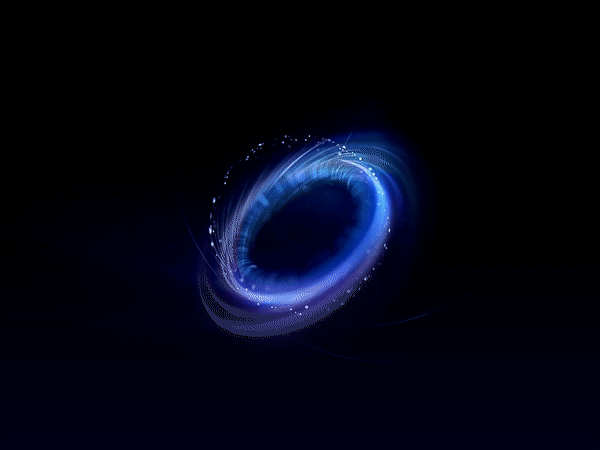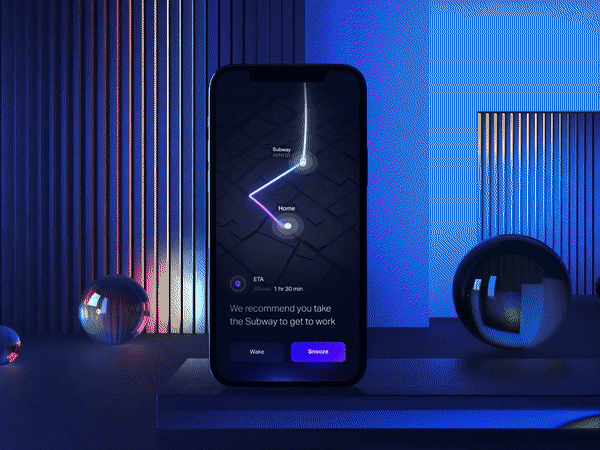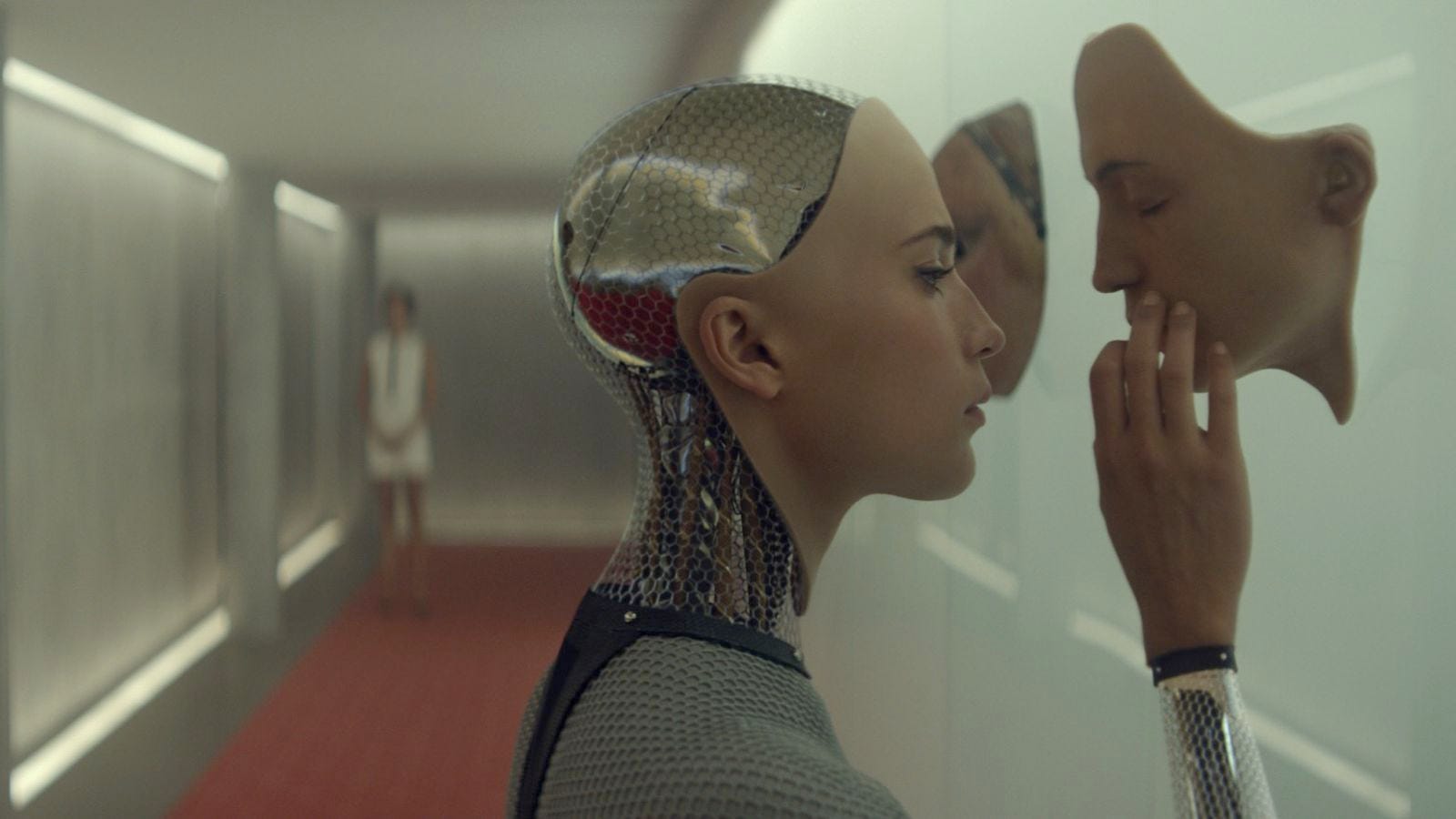
 на главную сниппетов
на главную сниппетов
With the release of Apple iOS 15 and the upcoming Google Pixel 6 device with Google’s Tensor chip, we will soon see a tight competition between two giants in the field of artificial intelligence. Artificial intelligence is the next big thing because
The more an interface leverages human conversation, the less users have to learn how to use it.
This guideline will help you design a better AI assistant experience.
What aspects to consider when working on UI design of AI assistant.
How should AI assistants look like? What is the first thing that comes to mind when you think about AI assistants? From a design point of view, AI is an abstract thing, so it might be hard to give a visual presence. Sci-fi movies tend to visualize AI as 3D spheres or waves.

If you search on Dribbble or Behance, you will find dozens of 3D spheres or waves. One of the best artworks of AI assistant belong to Gleb Kuznetsov:



Users should never ask questions like “Did the system understand what I said?” when they interact with AI assistants. They should be able to see that the system understands their request correctly.

It’s also worth telling the user what’s happening, especially when an operation will take some time to proceed.

While designing, consider how the natural dialogue can drive the visual interface you present to the user. Remember that the user might want to go back to modify some data they’ve provided. UI should be designed to allow that.

In user interface design, motion language plays a tremendous role in how the user feels about interaction with a product. And that is specifically true when it comes to AI assistant design.
Design should be strangely familiar.
No doubt that the visual aspect of AI assistants is essential, but even more critical is what AI assistant can do for users.
You need to adapt to technical limitations and leverage technical strengths to create a next-gen AI assistant.
Interaction with AI assistants should not feel awkward or break patterns that have evolved over the years in human-to-human conversation. You need to capture all possible user intentions (what the user will be trying to do with the help of AI) and frame them into the model of your AI assistant.
Always start with what humans want to do. Ask the question, “What would the user say or do in a particular situation?”
Create scripts for the dialog between the user and the assistant:
Here are a few specific recommendations on how to simplify user interaction with AI assistant:
The word “AI” implies that assistant should be capable of doing many different things. Ideally, users should think about AI assistant as a real human being that can understand their intention and is able to do what they tell them to do.
AI should support both single and multi-turn conversations. A multi-turn conversation is a conversation with multiple turns in which AI assistant asks questions and the user responds with the answers).
The system should be able to understand the context of the conversation, and this allows more natural behavior and multi-turn conversations.
AI should utilize all information it has about a user and turn it into value for the user. For example, AI assistant should learn users’ food and music preferences and surprise the user with relevant options whenever they choose to listen to music or order food delivery.
The system should remember what happened recently and what was said or done, especially for frequent actions (such as turning off/on lights).
AI assistant should also be proactive with the information it provides to the user.

Similar to any other technology, AI should serve a clear functional purpose. Do not introduce AI in your product to make it look cool because it likely makes it look quite the opposite. Clearly define core experience for AI assistant and ensure that it provides value to your target audience.
Always look at how people use your product.
You should introduce AI when it’s much easier to complete the task with the help of AI. One good example is finding a particular photo in the large photostream. It’s much easier to say, “Assistant, find a photo of me on Times Square.” rather than search for this photo manually.
There are two major interaction mediums for AI assistants:
It’s expected that AI assistant is the voice-first interface. The true power of AI is that it allows users to avoid direct manipulation with UI and solve the tasks much faster.
If you want to learn specific tips on how to design for voice, I encourage you to check Google and Amazon design guidelines.
Camera is another medium that can be valuable to users. Apple, Google, and other vendors already utilize the power of AI to improve the quality of pictures captured with device cameras.
The next-gen of mobile devices will use AI for real-time processing of imagery stream, making the camera the next data input medium.
The user will point on an object, freeze for a moment and the system will understand that the user is interested in that object.

Its possible to mix AI with AR to create a new medium.

Think about how you want the person using your AI assistant to feel about it. Many designers ask the question, “Should AI feel like a human? Should it have a unique voice and personality?” Ideally, yes, but we still far away from AI depicted in movies Her or Ex Machina.

At the current level of AI, we cannot guarantee that assistants we design will be as smart as real humans. And if you give AI assistant characteristics of a real human being, you can easily create overpromising. When users notice that AI is not as smart as they think, the magic of AI will go.
AI assistant shouldn’t annoy or force users to do what they don’t want to do.

In many products available on the market today, AI is introduced on top of existing technologies. Let’s take Apple Siri as an example. Apple motivates people to use Siri with voice, but the significant part of interaction still requires touch. If you want to design a truly enjoyable interaction, you need to
Make it easier to get things done using AI assistant alone
When you design AI assistant and select voice as a primary medium for interaction, you need to ensure that the user should be able to complete their task through voice alone.
Even when you introduce AI in your product, many users will skip it because they will think that its’ not essential for them. Its your goal as a designer to motivate them to try using AI.
You need to determine not only the capabilities of your AI assistant but also the benefits of using it
Here are a few questions that can help you with that:
In 1981, Steve Jobs famously compared computers to “bicycles for the mind.” Forty years later, this metaphor becomes even more evident.
We’re at the dawn of next big tech revolution that will change our perception of technology.
Soon AI assistant and your phone will be the same thing.
In this new reality, the computer won’t longer be a machine that use to solve our tasks, but rather an agent that understands our intention and is ready to assist us with our tasks.
When you design AI assistant, I encourage you to look for opportunities, not limitations. Create something you will be proud of.
на главную сниппетов